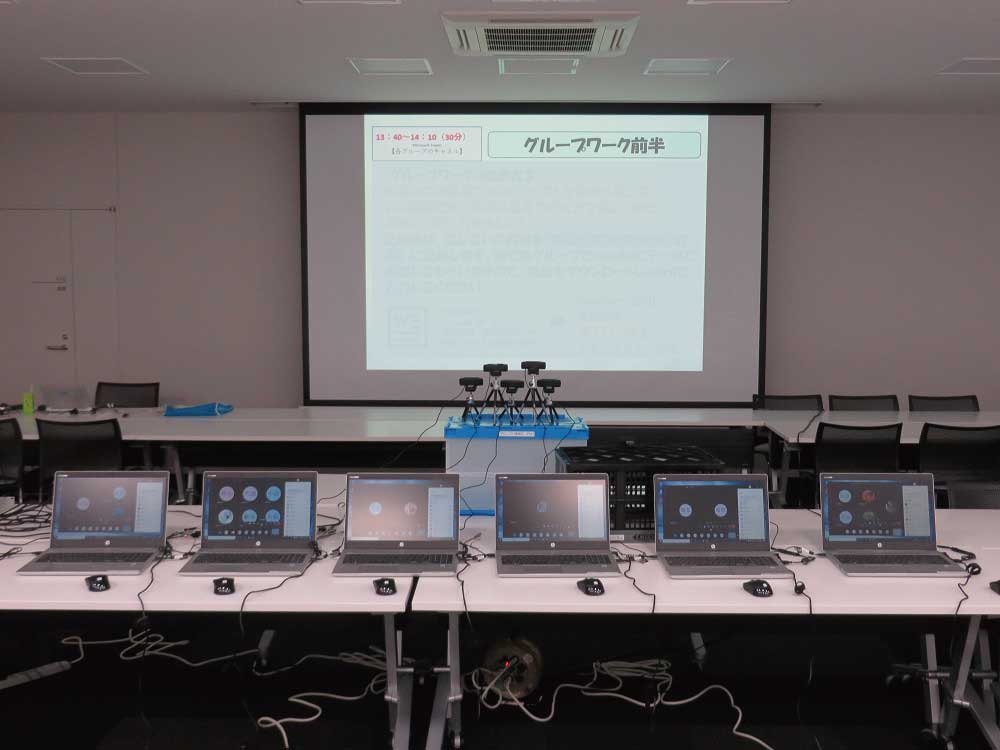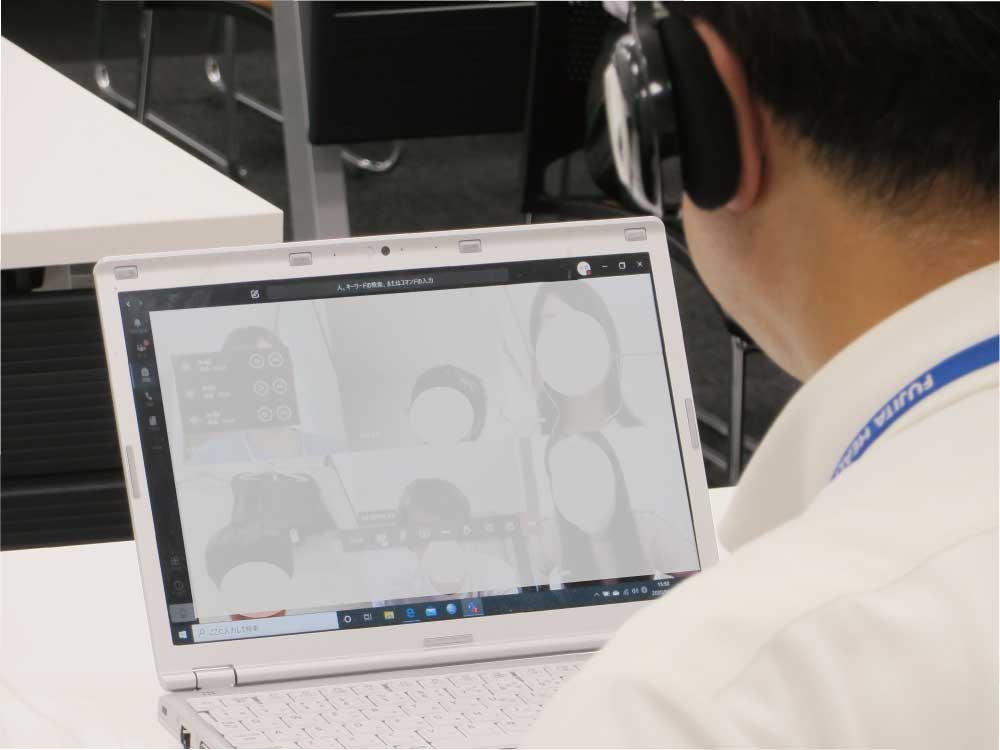Establishment of "The Online Assembly Education"
~The online interactive classes as an interprofessonal education~
During the 2020 academic year, “The Assembly Education” program completely transitioned into an online-delivery format in order to prevent the spread of new coronavirus infection. We established “The Online Assembly Education” program as an interprofessional educational program. We are utilizing “Microsoft Teams,” which is a video conferencing platform with a chat function, which is used alongside our existing learning management system (LMS), Moodle, to conduct interactive classes.
The following describe our initiatives of Assembly I, II, and III in this academic year.
The following describe our initiatives of Assembly I, II, and III in this academic year.


Assembly I
The primary aim of the Assembly I program is for all freshmen students to acquire communication skills. Students learn to "be interested in others," to “listen attentively" and to "question" based on understanding the importance of respect for others. In particular, students experience small-group learning exercises on the themes of "understand yourself," "understand others," “look," "listen," “question" and "build a team". Faculty support students' learning with the exercises as facilitators.
A total of 627 freshmen students from three departments were divided into six groups, as six “Microsoft Teams” teams, and split into further subgroups consisting of six students each from different disciplines (there were 105 subgroups in total).
Faculty in charge of the class used six laptops, each connected to a camera and a microphone, to deliver images and audio of the lecture simultaneously to all students via Microsoft Teams. Following the instruction of the faculty member, students moved into breakout rooms, called "channels" in Microsoft Teams, for their corresponding subgroup, and participated in online face-to-face discussion with each other. Faculty members alternated between the five or six rooms to stimulate the group discussion and support learning.
A total of 627 freshmen students from three departments were divided into six groups, as six “Microsoft Teams” teams, and split into further subgroups consisting of six students each from different disciplines (there were 105 subgroups in total).
Faculty in charge of the class used six laptops, each connected to a camera and a microphone, to deliver images and audio of the lecture simultaneously to all students via Microsoft Teams. Following the instruction of the faculty member, students moved into breakout rooms, called "channels" in Microsoft Teams, for their corresponding subgroup, and participated in online face-to-face discussion with each other. Faculty members alternated between the five or six rooms to stimulate the group discussion and support learning.
Assembly II
Sophomore students acquire "group skills" in the Assembly II program. Students participate in various project activities on their own initiative. Usually, students participate in various activities and local events on and off campus and at the university hospital, however, face-to-face activities were not possible at all this year due to COVID-19. Therefore, we compressed the year-long, two-semester program into the first semester only, and transitioned to online classes, dividing students into teams.
First of all, The Assembly lecture was delivered online via Microsoft Teams and the faculty members explained the purpose of The Assembly Education program and the content of Assembly Ⅰ, Ⅱ, Ⅲ, and Ⅳ. Then, students were divided into teams consisting of six students each from different disciplines, and participated in project activities through Microsoft Teams. Faculty members in charge of each project asked students "What kind of activities could students have done originally?", "What kind of preparation needed to be done?" and "What were students supposed to learn through those activities?". Facilitated by the faculty member, students shared their thoughts within the team.
First of all, The Assembly lecture was delivered online via Microsoft Teams and the faculty members explained the purpose of The Assembly Education program and the content of Assembly Ⅰ, Ⅱ, Ⅲ, and Ⅳ. Then, students were divided into teams consisting of six students each from different disciplines, and participated in project activities through Microsoft Teams. Faculty members in charge of each project asked students "What kind of activities could students have done originally?", "What kind of preparation needed to be done?" and "What were students supposed to learn through those activities?". Facilitated by the faculty member, students shared their thoughts within the team.
Assembly III
All junior students (and the senior students from some departments) learn “patient-centered” concepts during the Assembly III program. Usually, we offered the Team-based Learning (TBL) program, however, it was unable to be conducted in a face-to-face manner this year. We transitioned to online delivery, maintaining the learning style in team units.
A total of 759 students from three departments were divided into four groups that were, in turn, broken into multidisciplinary subgroups consisting of five students. First, faculty members delivered the lecture simultaneously via Microsoft Teams, utilizing four laptops. Then, students moved to individual “channels" in Microsoft Teams and exchanged views within their subgroups. Faculty members alternated between channels to support learning.
[First day]
First, students worked individually on tasks assigned by faculty members in charge of Assembly I and II, then worked within a team. Students turned their cameras on and actively participated in discussion with team members on Microsoft Teams.
[Days 2 and 3]
The theme of this year’s Assembly III program was "QOL – Quality of Life." While reading the given scenario, students pondered how the patient would want to live, and discussed within their teams how good health professionals should approach the patient's wish.
On Day 2, students considered standing in the position of the patient and the patient’s family members. On Day 3, students thought about how they could assist the patient as “Good Health Professionals” and reviewed what they had learned. Finally, faculty members introduced what will be learned in the next step, Assembly IV.
A total of 759 students from three departments were divided into four groups that were, in turn, broken into multidisciplinary subgroups consisting of five students. First, faculty members delivered the lecture simultaneously via Microsoft Teams, utilizing four laptops. Then, students moved to individual “channels" in Microsoft Teams and exchanged views within their subgroups. Faculty members alternated between channels to support learning.
[First day]
First, students worked individually on tasks assigned by faculty members in charge of Assembly I and II, then worked within a team. Students turned their cameras on and actively participated in discussion with team members on Microsoft Teams.
[Days 2 and 3]
The theme of this year’s Assembly III program was "QOL – Quality of Life." While reading the given scenario, students pondered how the patient would want to live, and discussed within their teams how good health professionals should approach the patient's wish.
On Day 2, students considered standing in the position of the patient and the patient’s family members. On Day 3, students thought about how they could assist the patient as “Good Health Professionals” and reviewed what they had learned. Finally, faculty members introduced what will be learned in the next step, Assembly IV.

